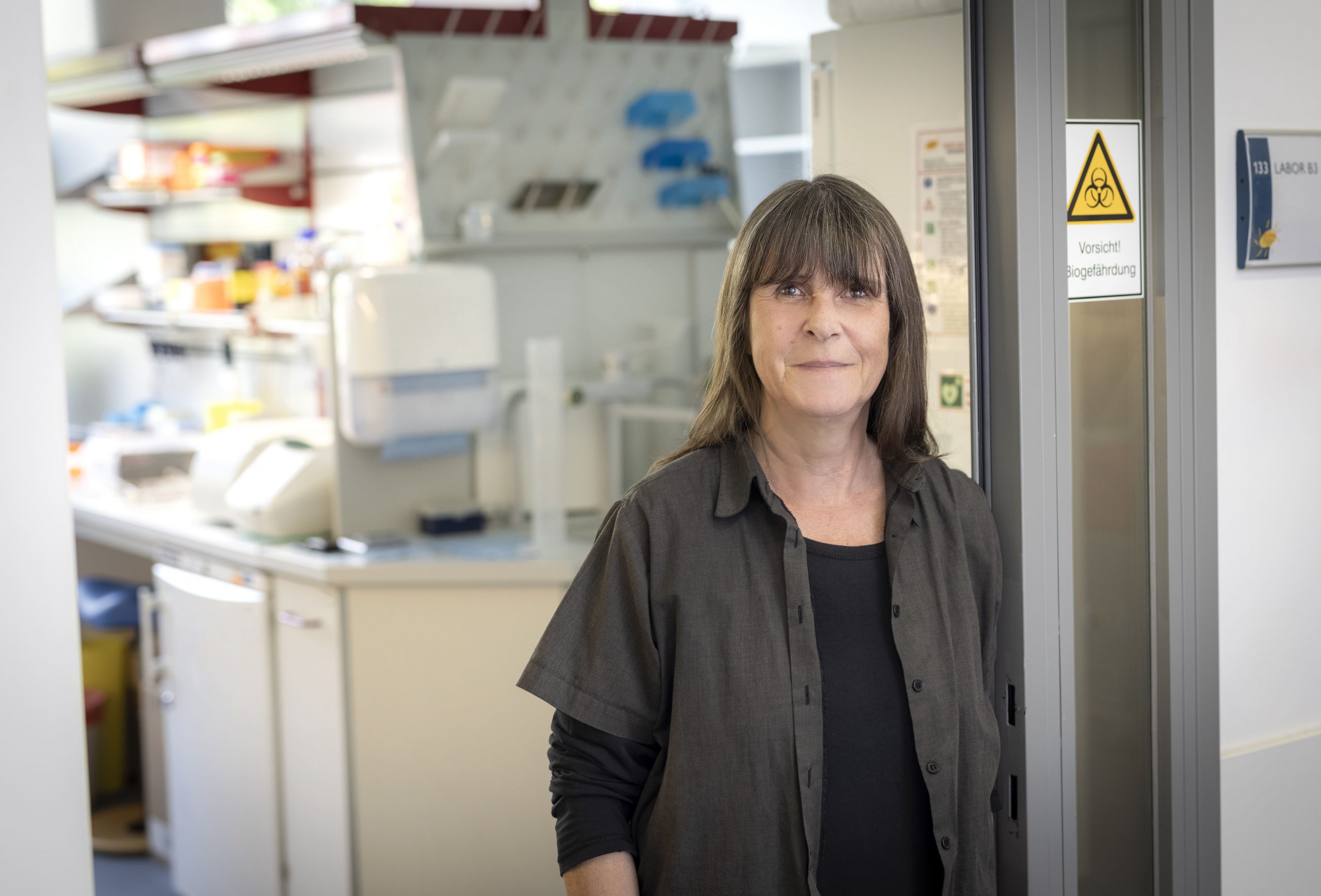Background
Leukemia accounts for 25-35% of all childhood cancers and is thus the most common malignancy in children. The comprehensive analysis of specific genetic lesions serves on the one hand to determine their biological impact, and on the other to evaluate whether they may be used as predictive markers for the refinement of risk-adapted therapy.
Our research
Human induced pluripotent stem cells as novel cellular model system
Human induced pluripotent stem cells (hiPSCs), with their self-renewal and differentiation capabilities, are a powerful tool for in vitro disease modeling and preclinical drug testing. By generating CRISPR/Cas9 genome-edited hiPSC lines and differentiating them into hematopoietic stem and progenitor cells, we aim to create models that mimic the early steps of leukemogenesis. This approach allows us to study the oncogenicity and downstream effects of specific leukemia-associated genetic alterations in a cell-type and differentiation stage-specific context.
Identification and characterization of rare genetic subtypes
The comprehensive integrative genomic characterization of childhood B-cell acute lymphoblastic leukemia (B-ALL) has identified more than 20 distinct subtypes, each with unique biological and clinical characteristics. Due to the rarity of some subtypes, their biology remains largely unknown. In collaboration with the Labdia Labordiagnostik and the St. Anna Children’s Hospital, we aim to genetically classify all B-ALL cases diagnosed in Austria over the past two decades, and through international collaborations we seek to characterize novel and rare subtypes, focusing on their biological properties and clinical relevance.
Prognostic impact of specific genetic alterations
While the current risk stratification used in clinical trials of childhood leukemia has proven to be an excellent guide for therapeutic decisions, there is still room for improvement. In collaboration with the leading oncologists of the St. Anna Children’s Hospital and through both national and international studies, we are evaluating whether specific genetic lesions or combinations thereof have additional predictive value. Our goal is to potentially incorporate these findings into risk-adapted therapy concepts to further refine stratification strategies.
Projects and funding

- Childhood Leukemia: Overcoming distance between South America and Europe Regions (CLOSER)
CCRI responsible Principal Investigator: Sabine Strehl
Coordinator: Mireia Camos, Hospital Sant Joan de Déu de Barcelona, Spain
H2020 Grant Agreement ID – 825749
Duration: 01/01/2019 to 31/03/2024
https://closerleukemia.eu

Selected Articles
Collaborating Partners
National: Meinrad Busslinger (IMP, Vienna, Austria) International: Mireia Camós Guijosa (Hospital Sant Joan de Deu, Barcelona, Spain), Maria Sara Felice (Hospital de Pediatría “Prof. Dr. J. P. Garrahan” Buenos Aires, Argentina), Lisa Russell, Anthony V. Moorman (Newcastle University, Newcastle-upon-Tyne, UK), Jan Trka, Jan Zuna, Marketa Zaliova (CLIP & Department of Paediatric Haematology and Oncology, Second Faculty of Medicine, Charles University & University Hospital Motol, Prague, Czech Republic), Luis Castilio (Centro Hospitalario Pereira Rossell, Montevideo, Uruguay), Myriam Campbell (Hospital Roberto del Rio, Universidad de Chile, Santiago de Chile, Chile), Hélène Cavé (University Hospital Robert Debré & INSERM UMR_S1131, Institut de Recherche Saint-Louis, Université Paris-Cité, Paris, France).
About Sabine Strehl
Dr. Sabine Strehl obtained her PhD in biology from the University of Vienna in 1987, at that time working on the replication domain organization of plant chromosomes. In 1988 she was one of the first researchers who joined the newly founded CCRI. She started to focus on the molecular cytogenetic analysis of both neuroblastoma and leukemia and became an expert in in situ hybridization. In 1995 she obtained a fellowship from the Max-Kade foundation and spent three years in the Genetics Division, Children’s Hospital and Harvard Medical School in Boston (USA) where she received extensive training in molecular biology. Upon her return to the CCRI in 1998, she specialized in pediatric leukemia research and in July 2006 was appointed as leader of the Genetics of Leukemia group of the CCRI. Since then she has dedicated her research to understanding the pathogenesis and progression of leukemia with a focus on the comprehensive characterization of its genetic features and their biological and functional consequences. It is of particular importance to her to link basic and translational research to foster optimal treatment strategies and to achieve this goal she closely collaborates with the pediatric hemato-oncologists of the St. Anna Children’s hospital.



